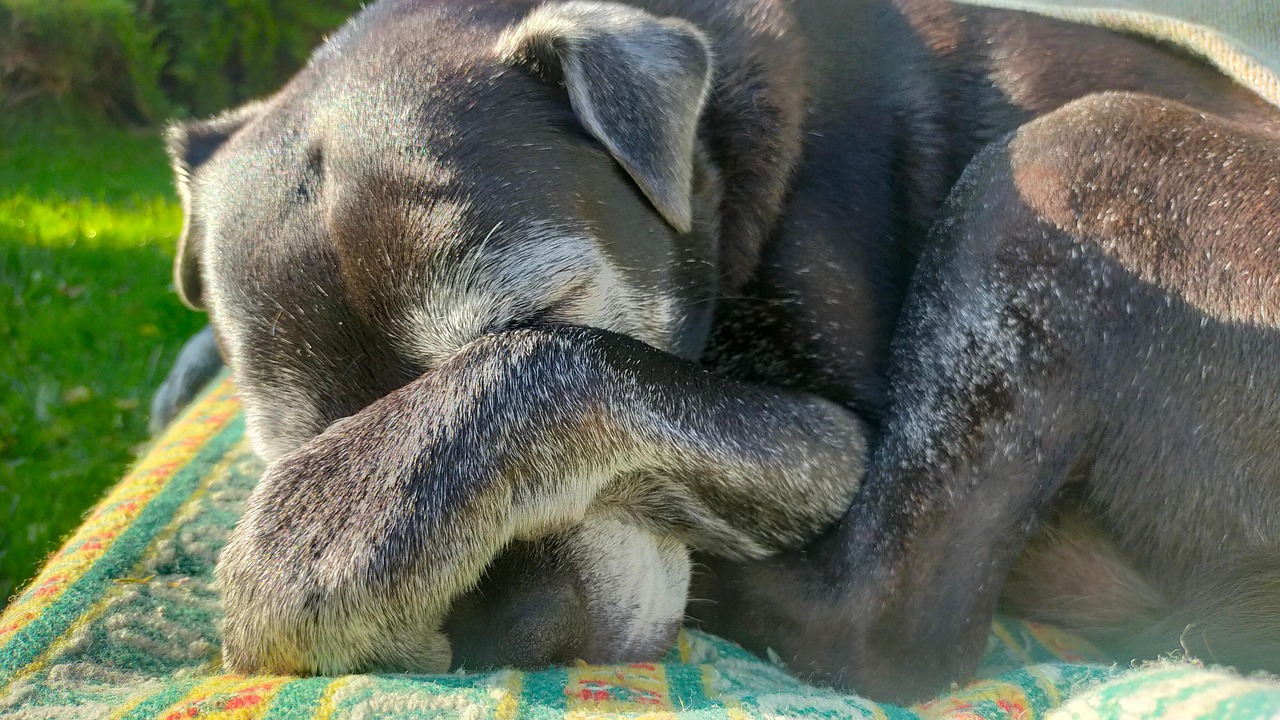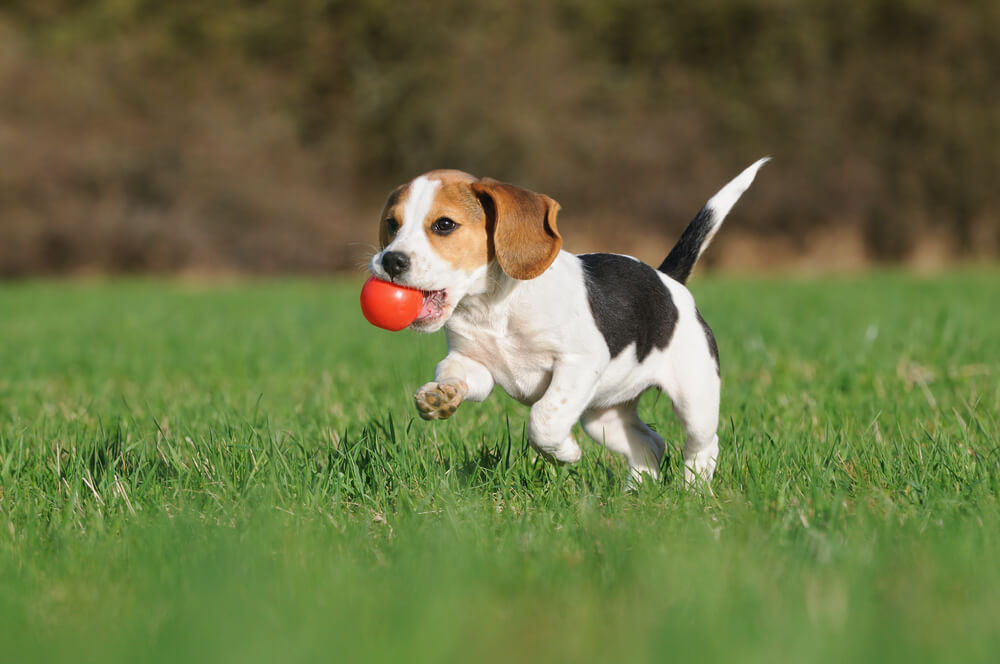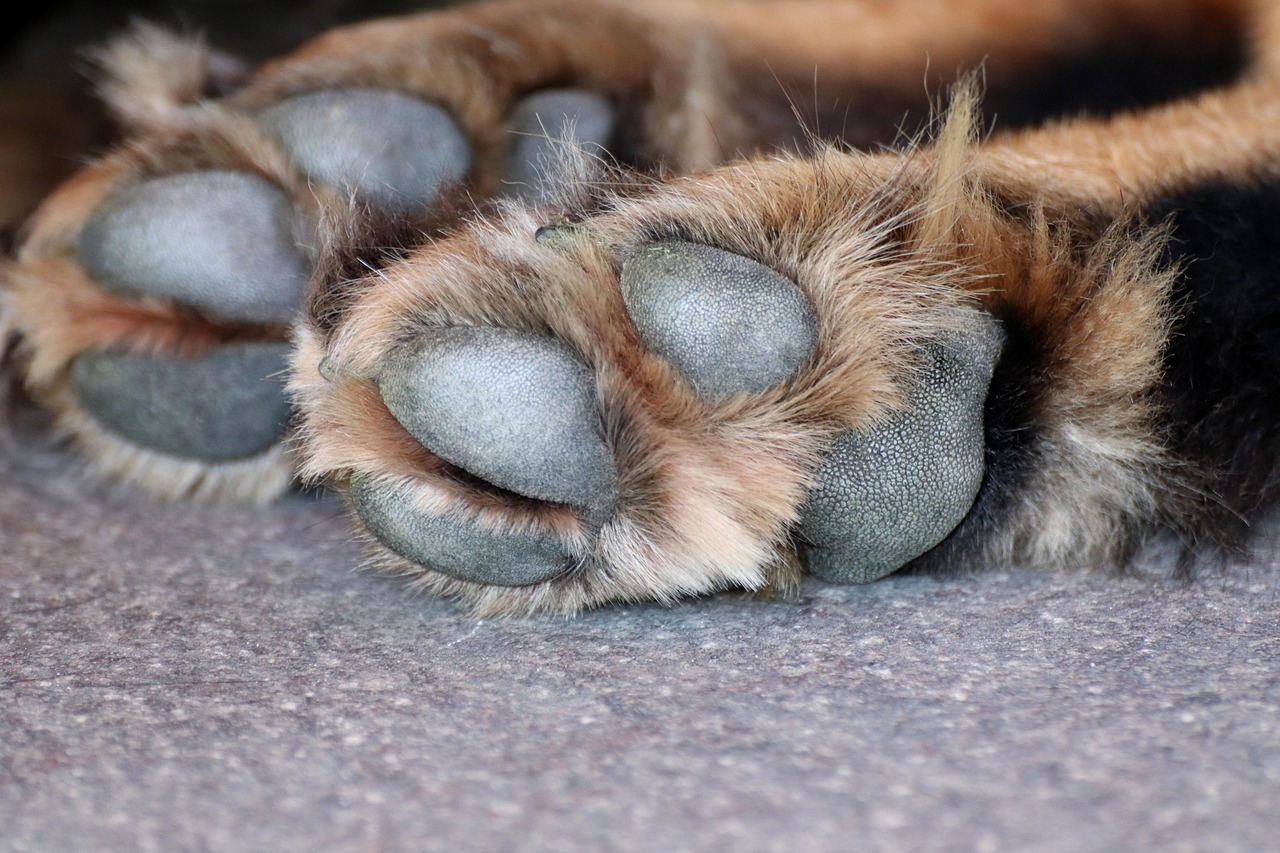Hey Ollie blog readers! We’re offering you an exclusive 60% OFF your starter box! Try now!
It’s one of the hardest things to witness. One day, your dog is trotting down the hallway like usual. The next, their back legs are trembling, giving out, or collapsing entirely. They might stumble trying to get up from their bed, lose balance on a walk, or sit down abruptly when their legs stop cooperating. If this has happened to your senior dog, you’re not imagining things—and you’re definitely not alone.
Many dog parents find themselves searching phrases like “old dog back legs giving out” or “senior dog legs collapsing” after a scary incident. It’s confusing, emotional, and sometimes urgent. But the good news is, there are steps you can take to understand what’s going on and make things better for your dog, starting today.
This guide breaks down the most common causes of hind leg weakness in older dogs, what signs to watch for, and how to help your pup feel supported and safe at home.
Quick Answer: Why Are My Old Dog’s Back Legs Collapsing?
The short answer is that aging affects your dog’s entire body—from muscles and joints to nerves and balance. When back legs start to collapse, it’s often because one or more of those systems isn’t working as well as it used to.
Some of the most common reasons include:
- Arthritis: Joint inflammation that leads to stiffness and weakness
- Degenerative myelopathy: A spinal cord disease that affects coordination
- Hip dysplasia: Structural issues in the hip joint that worsen with age
- Muscle atrophy: Loss of muscle mass due to pain, inactivity, or disease
- Nerve damage: From a spinal injury or slipped disc
- Other medical issues: Like diabetes, Cushing’s disease, or tick-borne illness
Sometimes the cause is slow and progressive. Other times, the collapse seems to come out of nowhere. In either case, your vet can help determine what’s going on and build a plan that supports your dog’s comfort and mobility.
Common Causes of Senior Dog Leg Weakness and Collapse
When a senior dog’s back legs start giving out, the cause usually isn’t just “old age.” There’s almost always something deeper going on—whether it’s in the joints, the nerves, or the muscles that help your dog stand and move.
Here are some of the most common reasons behind hind leg weakness in older dogs:
1. Arthritis and Joint Degeneration
As dogs age, their joints can wear down, especially if they’ve been active most of their life or carry extra weight. Arthritis causes inflammation in the joints, which leads to stiffness, pain, and difficulty standing or walking. It often develops slowly but becomes more obvious as your dog gets older.
2. Degenerative Myelopathy (DM)
DM is a progressive spinal cord condition that affects nerve signals to the back legs. It typically starts with subtle signs—like dragging a foot or occasional stumbling—and gradually gets worse over time. It’s often mistaken for arthritis at first, but the progression is different.
3. Hip Dysplasia
Hip dysplasia is a structural problem with the hip joint, and while it often shows up earlier in life, it can become much worse with age. Dogs with hip dysplasia may have difficulty standing, show signs of pain, or have legs that slide out from under them.
4. Neurological Problems or Spinal Injury
Conditions like herniated discs, spinal stenosis, or trauma can compress nerves and lead to sudden or progressive leg weakness. If the collapse comes on quickly or your dog seems to lose control of both back legs at once, nerve involvement is a likely cause.
5. Muscle Atrophy
Older dogs who move less—either due to pain or slowing metabolism—often lose muscle mass. This loss of strength can make it hard to support their body weight, especially in the hind end. Even a slight imbalance can cause falls or leg buckling.
6. Other Underlying Health Issues
Diseases like diabetes, Cushing’s, hypothyroidism, or tick-borne infections can also affect strength, coordination, or nerve function. Some of these are treatable with medication once diagnosed.
Signs Your Senior Dog’s Leg Collapse Might Be Serious
A single stumble or wobbly step might not be an emergency, especially after a nap or long walk. But if your dog is showing any of the following signs, it’s time to call your vet:
- Struggling to stand up from lying down
- Legs crossing, slipping, or dragging when walking
- Frequent collapsing or falling during movement
- Sudden loss of balance, even on flat surfaces
- Limping, whining, or signs of pain
- Muscle twitching or shaking in the back legs
- Loss of control over bladder or bowels
- Personality changes or sudden fatigue
These symptoms may indicate a neurological issue, advanced joint damage, or something more serious that needs treatment right away.
What to Do Immediately If Your Dog’s Back Legs Give Out
Seeing your dog collapse is alarming, but staying calm can help you—and your dog—handle the moment more safely. Here’s what to do right away:
1. Keep Your Dog Still and Calm
If your dog is alert and breathing normally, speak in a calm voice and try to keep them from struggling or moving too much. Excess movement could cause further injury if there’s a spinal or joint issue.
2. Support Their Back End If Needed
If they need help moving to a softer surface or out of harm’s way (like off a slippery floor), use a towel or blanket as a sling under their belly. Gently lift just enough to support their weight.
3. Offer Comfort, Not Force
Let your dog rest. Don’t try to get them to walk or stand right away. Sudden weakness might need time to pass, especially if it’s tied to pain or fatigue.
4. Check for Signs of Injury or Pain
Look for swelling, limping, yelping when touched, or dragging of the back legs. If your dog is showing pain, skip the examination and head straight to the vet.
5. Contact Your Veterinarian
Even if your dog seems okay afterward, a sudden collapse always deserves a call to your vet. They’ll help you figure out whether it’s urgent and what the next steps should be.
What Your Vet May Check For
Your vet’s job is to figure out what’s causing the collapse and how to treat it—or manage it—going forward. That starts with a full exam, especially focused on the nervous system, joints, and muscles.
Here’s what to expect:
- Physical exam: Your vet will assess muscle tone, joint flexibility, pain response, and posture.
- Neurological tests: These help detect spinal cord or nerve issues. Your vet might check reflexes, paw placement, or gait.
- X-rays: These are often used to check for arthritis, hip problems, or spinal disc issues.
- Bloodwork: This helps rule out diseases like diabetes, Cushing’s, or thyroid problems.
- Advanced imaging: If needed, your vet may recommend an MRI or CT scan, especially for suspected disc disease or neurological conditions.
- Referral to a specialist: In complex cases, a neurologist or orthopedic specialist might be involved.
Getting a clear diagnosis is the first step to helping your dog walk more comfortably—and stay as mobile as possible in their senior years.
Treatment Options for Senior Dogs With Hind Leg Weakness
Once your vet has diagnosed the cause behind your dog’s leg issues, the treatment plan will depend on your dog’s age, overall health, and the severity of the condition. In many cases, the goal is to manage symptoms, ease discomfort, and preserve as much mobility as possible.
Non-Surgical Support
Most senior dogs benefit from non-invasive treatments that help manage pain and build strength:
- Pain medications: NSAIDs or other prescriptions can ease joint and nerve pain.
- Anti-inflammatories: These help reduce swelling in joints and tissues.
- Joint supplements: Glucosamine, chondroitin, and omega-3s support joint health and may slow degeneration.
- Physical therapy: Gentle exercises guided by a professional can improve strength, balance, and flexibility.
- Hydrotherapy: Swimming or underwater treadmill work builds muscle without adding stress to joints.
- Mobility aids: Rear-lift harnesses, toe grips, or even wheelchairs can make daily movement safer and more comfortable.
- Acupuncture or laser therapy: These treatments are increasingly used in veterinary care to reduce pain and promote healing.
When Surgery Might Be an Option
Surgical treatment isn’t always ideal for senior dogs, but in certain cases—like a herniated disc or severe hip issues—your vet may recommend it. Decisions around surgery depend on your dog’s overall health, the expected recovery time, and whether it will truly improve their quality of life.
At-Home Tips to Support Your Dog’s Mobility and Comfort
Helping your dog stay steady and supported doesn’t end at the vet’s office. What you do at home can make just as much of a difference.
Here’s how to create a safe, mobility-friendly environment for your senior dog:
- Use non-slip rugs on hardwood or tile floors to prevent slipping.
- Add ramps instead of stairs to access beds, couches, or the car.
- Keep their nails trimmed to improve traction and stability.
- Lift food and water bowls slightly to reduce strain on joints.
- Offer an orthopedic dog bed that cushions sore joints and muscles.
- Use a harness or sling to help with standing, walking, or potty breaks.
- Stick to gentle daily exercise to preserve muscle and joint flexibility.
- Keep routines consistent, which can reduce anxiety and make navigation easier for dogs with balance issues.
With the right home setup, your dog can continue to move comfortably, maintain independence, and enjoy their golden years without fear of falling or struggling.

How Diet and Nutrition Can Help Strengthen Aging Legs
When your dog’s back legs are giving out, food might not be the first thing that comes to mind. But the truth is, what’s in your dog’s bowl can directly affect their strength, comfort, and long-term mobility.
Here’s why nutrition matters:
- Inflammation starts in the gut: Poor-quality food or artificial ingredients can trigger inflammation throughout the body, including the joints and nerves.
- Muscle needs protein: Older dogs tend to lose muscle mass faster, especially when they’re less active. Without enough high-quality protein, that decline speeds up.
- Excess weight makes everything harder: Even a few extra pounds can put serious stress on weak legs and aging joints. A well-balanced diet helps manage weight naturally.
- Certain ingredients can support joint health: Omega-3s from fish, antioxidants from real fruits and vegetables, and amino acids from lean meats all play a role in keeping dogs strong and mobile.
Feeding your dog a diet that supports muscle maintenance, gut health, and reduced inflammation is one of the most powerful tools you have. Combined with vet care and movement, nutrition becomes a key part of the plan.
Ready to help your dog feel more supported, inside and out?
Help support your dog’s muscle & joint health with our personalized food quiz!
Why Ollie Is a Smart Choice for Senior Dogs
At Ollie, we craft every meal to help dogs feel their best—especially as they get older. That means more than just high-quality ingredients. It means meals that support strength, movement, and whole-body wellness from the inside out.
Here’s how Ollie helps support aging dogs with leg weakness:
- Real, human-grade protein to preserve lean muscle
- No fillers, by-products, or artificial additives that could fuel inflammation
- Omega-3-rich oils and anti-inflammatory veggies like spinach, carrots, and sweet potato
- Portioned for weight control, which is critical for joint and back leg stability
- Vet-formulated recipes designed for balanced nutrition, even in dogs with sensitive stomachs
We’ve seen countless stories from pet parents who noticed a difference in energy, strength, and movement after switching to Ollie. For senior dogs with shaky legs or stiffness, feeding the right food can offer comfort and renewed confidence.
Your Dog Deserves Comfort and Support in Their Senior Years
Watching your dog struggle to walk or keep their balance is heartbreaking—but it’s not the end of their story. With the right care, many older dogs continue to enjoy happy, active lives. That care starts with understanding what’s causing their back legs to give out, then working with your vet, adjusting their environment, and giving them the nutrition they need to feel their best.
You don’t have to do it alone. From practical tools to fresh, real food, there’s a lot you can do right now to give your dog more strength, stability, and comfort.
Want to give your senior dog the support they need—starting in the bowl?
Fresh food. Real results. Because old dogs deserve to feel good, too.
Frequently Asked Questions About Senior Dog Mobility
Why are my old dog’s back legs suddenly giving out?
Sudden collapse can be caused by arthritis, nerve damage, degenerative myelopathy, or underlying illness. It’s best to check with your vet right away to determine the exact cause.
Is it normal for senior dogs to lose balance?
Some wobbling can happen with age, but frequent falls, slipping, or leg weakness are not normal and may point to a treatable condition.
Can muscle loss cause my dog’s legs to collapse?
Yes. Muscle atrophy is common in older dogs, especially if they’ve been less active due to pain or injury. Maintaining muscle through diet and gentle exercise is important.
How do I know if my dog’s leg issues are serious?
If your dog is collapsing, unable to stand, dragging their feet, or showing signs of pain, it’s time to call your vet. Sudden symptoms should never be ignored.
Can diet actually help my senior dog’s mobility?
Yes. A diet rich in protein, healthy fats, and anti-inflammatory ingredients can support muscle health, reduce joint inflammation, and help your dog stay active longer.
Tagged As:

The nutrition your dog needs,
the food they want.

Enjoying our articles? Subscribe our Newsletters and get new articles directly to your inbox
You might also like
26 August 2025
8 MINS READ
Why Is My Senior Dog Shaking?
You’re sitting with your dog and notice something strange. Their body is trembling. It’s subtle at first, but then the shaking becomes more noticeable. Maybe it’s in their legs, or their who…
by Ollie Pets
26 August 2025
7 MINS READ
Dog Frito Paws: Why Do My Dog’s Paws Smell Like Fritos?
It starts out as a curious moment. You’re relaxing with your dog, they curl up next to you, and suddenly—there it is. That distinct, salty scent that smells exactly like corn chips or Fritos. …
by Ollie Pets
26 August 2025
9 MINS READ
Why Is My Dog Throwing Up Water or Clear Liquids?
It’s always a little unsettling. You hear the sound of retching from the next room, rush over, and find your dog has just thrown up what looks like water or clear liquid. There’s no food in it. No…
by Ollie Pets







